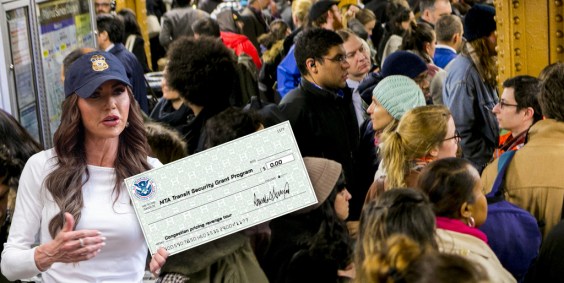
As a charter member of the Congress for New Urbanism, I’ve now attended twenty of the organization’s annual conferences. This month’s event may have been my favorite yet, mostly thanks to its location in downtown Buffalo, a place that reminds us so poignantly of both the successes and failures of city planning, as first lovingly practiced and later ruthlessly perpetrated across America.
Most of the local residents in attendance — and there were many — seemed to enthusiastically embrace New Urbanism’s ethos of redesigning our cities around people rather than cars, recognizing how the auto age had perhaps done as much damage to downtown Buffalo as its devastating loss of industry.
But there are always exceptions. In the Buffalo News’ only prominent review of the event, art critic Colin Dabkowski wrote an “open letter to the New Urbanist movement,” that centered upon a damning critique of my community lecture there and also of my book, Walkable City, which he seems to have read in part.
The thoughts that follow are my response to Dabkowski’s review. The Buffalo News worked with me to craft this article as an Op-Ed for Sunday’s paper. Then, three hours from press time, they demanded that I remove most of my references to Mr. Dabkowski’s error-loaded text. Not excited by that prospect, I am sharing my comments here instead.
I suppose that my biggest surprise in reading the Buffalo News article came from the fact that I had been expecting to hear such a critique sooner. In the eighteen months since Walkable City came out — and over more than 100 reviews — all but the most sympathetic critics seem to have been largely silent. I was waiting for comments like these, but eventually gave up.
The reason I was waiting is because two of the book's central arguments — "Downtowns First" and "Urban Triage" — imply winners and losers, and I have seen at least the first argument anger people in the past. Folks who don't live in downtown are often resentful seeing money spent there, whether they find their homes in cash-strapped slums or wealthy suburbs.
I have come to this Downtowns First strategy not as a social critic or even as a social scientist, but as a professional planner who learned from Jane Jacobs to think of cities as ecosystems that thrive or decline holistically. With some difficulty, and along with many of my colleagues, I have reached the conclusion that a healthy metropolis requires a vibrant center city to hold it together. Our experience suggests that, without a strong downtown core, investments in non-downtown areas are likely to provide only fleeting benefits. Both are important, but the downtown more so.
Urban Triage, on the other hand, is a complex concept, and one that is easily misunderstood. But I can’t begin to fathom how Mr. Dabkowski came to think that Urban Triage suggests "infrastructure investment should go largely to a city’s densest and most-prosperous neighborhoods at the expense of outlying areas.” That could not be further from anything that we New Urbanists have ever said or written.
Urban Triage is not a technique for choosing among neighborhoods for investment. It is a technique for, within any given neighborhood, discerning among more walkable and more automotive environments, so that walkability investments may be made in those corridors where walking has a chance of taking root. Urban Triage says that the road between the mall and the office park, lined by auto dealers, is a worse place for new streetscapes than the street between the bus station and the stadium, lined by struggling storefronts. It aims investment not at prosperity, but at possibility.
Ultimately, what I think has happened is that Mr. Dabkowski has confused the two different arguments in his mind. Downtowns First is a macro argument. Urban Triage is a micro one. Downtowns First favors walkable, urban areas, whatever their demographics, because we believe that cities depend on them for long-term success. Urban Triage forces us to be realistic about where such walkability is possible, again, within neighborhoods, not among them. If he had finished my book, I think this confusion would not have occurred.
How do I know that Mr. Dabkowski didn't finish my book? Well, he says that I am an "outspoken critic of… any structures that lack traditional details of the kind you see in buildings by H.H. Richardson or Louis Sullivan." Where in the world did he get that idea? Has he seen my modernist house? In any case, I would direct him to the second-to-last chapter of Walkable City, where I celebrate the high tech Pompidou Center in Paris, and note: "What matters is not whether the details were crafted by a stone carver or a cold extruder, but whether they exist at all." I believe that architecture needs small-scale details to engage the pedestrian. Beyond that, style is irrelevant.
There are too many other errors in the piece to address them all, and I fear annoying readers with inside baseball, but let me just mention one. Mr. Dabkowski’s statement, almost libelous, that I blithely suggest "a city's most intractable problems" should be put off for "another decade," bears no relation to what he would have read in Walkable City. What I suggested putting off was, again, streetscape improvements in "the auto zone," roadways "lined by muffler shops and fast-food drive-throughs." The automotive commercial strip is rarely the location of a city's toughest problems — indeed, they are usually zoned out of it.
When I am brought to a city, it is often by the Office of Human Rights or some other group that understands that our nation's poor and disabled are disproportionately represented among the ranks of pedestrians and cyclists. They walk, bike, roll, and take transit, often because they have no choice in the matter. They rely on walkable downtowns and neighborhood centers because they are largely incapable of entering the auto zone.
I find it troubling that my experience advancing the interests of these disenfranchised communities could somehow be considered “trickle-down,” “dismissive,” or “exclusive” by a critic, but the work of revitalizing our cities is a complex business, and prone to misunderstanding. I guess I can take some solace in the fact that it took so long for this particular misunderstanding to occur.
Jeff Speck, AICP, CNU-A, LEED-AP, Honorary ASLA, is the Principal of Speck & Associates, a city-planning firm based in Washington, DC, and the author of Walkable City: How Downtown Can Save America, One Step at a Time.





